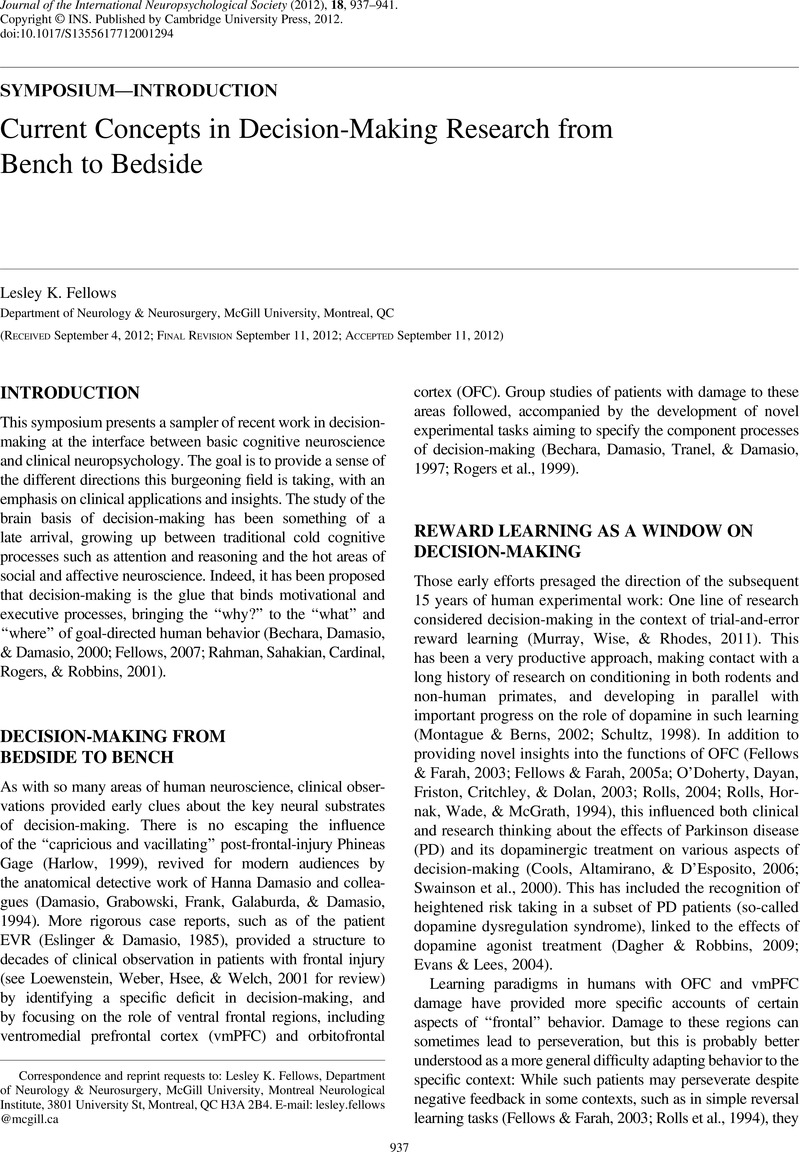Crossref Citations
This article has been cited by the following publications. This list is generated based on data provided by Crossref.
Sharp, Madeleine E.
Viswanathan, Jayalakshmi
McKeown, Martin J.
Appel-Cresswell, Silke
Stoessl, A. Jon
and
Barton, Jason J.S.
2013.
Decisions under risk in Parkinson’s disease: Preserved evaluation of probability and magnitude.
Neuropsychologia,
Vol. 51,
Issue. 13,
p.
2679.
Knox, Lucy
Douglas, Jacinta M.
and
Bigby, Christine
2015.
‘The biggest thing is trying to live for two people’: Spousal experiences of supporting decision-making participation for partners with TBI.
Brain Injury,
Vol. 29,
Issue. 6,
p.
745.
George, Sophie A.
Rodriguez-Santiago, Mariana
Riley, John
Abelson, James L.
Floresco, Stan B.
and
Liberzon, Israel
2015.
Alterations in cognitive flexibility in a rat model of post-traumatic stress disorder.
Behavioural Brain Research,
Vol. 286,
Issue. ,
p.
256.
Knox, Lucy
Douglas, Jacinta M.
and
Bigby, Christine
2016.
Becoming a decision-making supporter for someone with acquired cognitive disability following traumatic brain injury.
Research and Practice in Intellectual and Developmental Disabilities,
Vol. 3,
Issue. 1,
p.
12.
Vaidya, A.R.
and
Fellows, L.K.
2017.
Decision Neuroscience.
p.
277.
Knox, Lucy
Douglas, Jacinta M.
and
Bigby, Christine
2017.
“I’ve never been a yes person”: Decision-making participation and self-conceptualization after severe traumatic brain injury.
Disability and Rehabilitation,
Vol. 39,
Issue. 22,
p.
2250.



